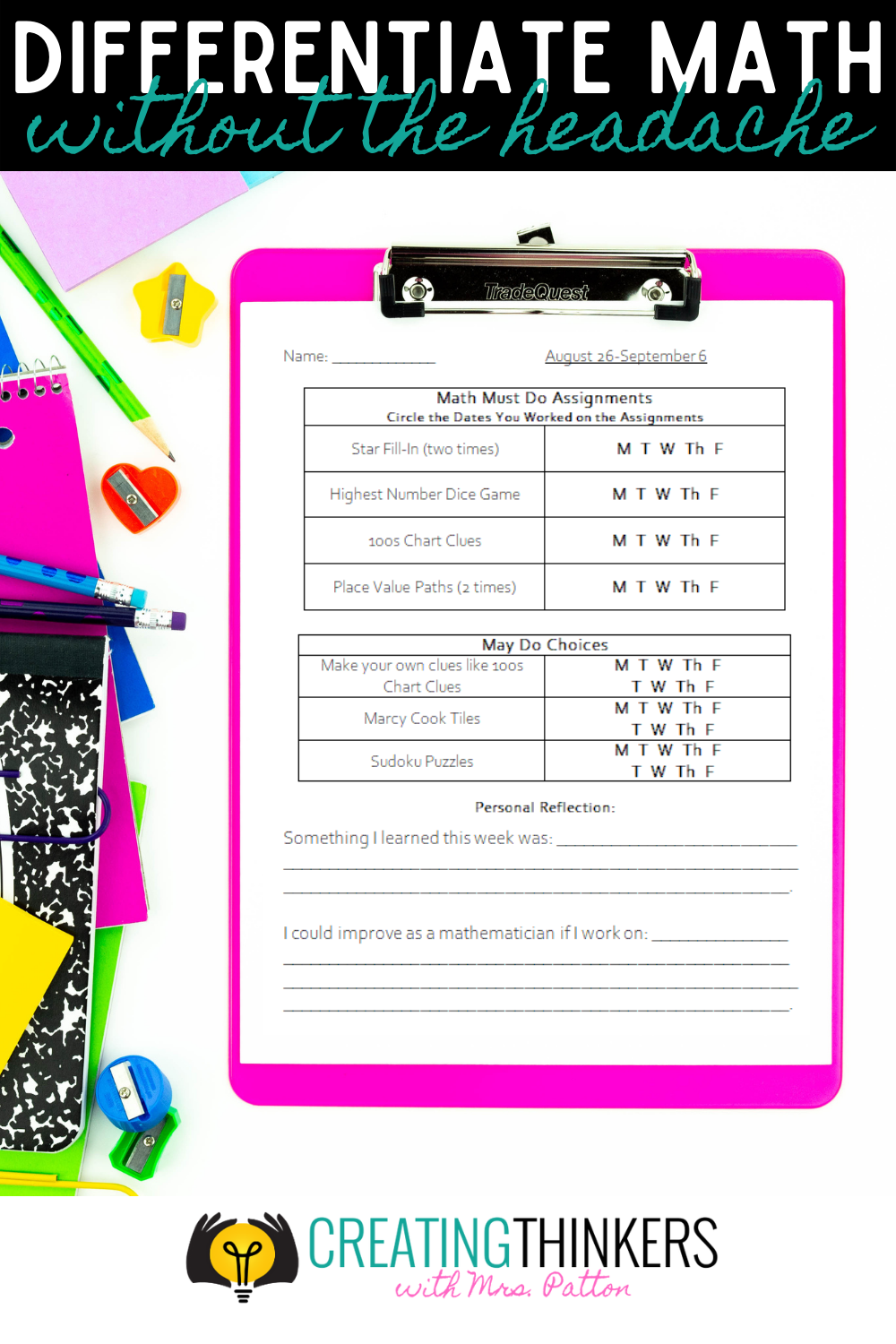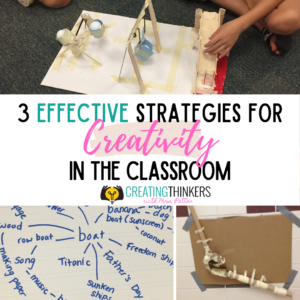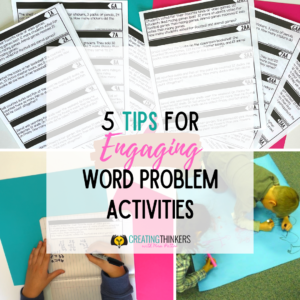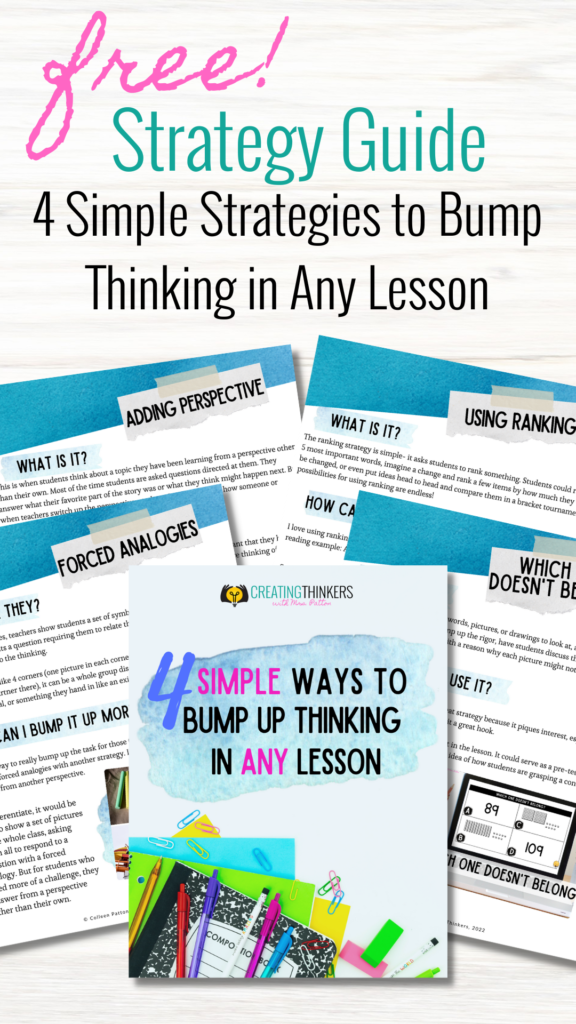I know, I know. For so many teachers, they have had it with being told to differentiate instruction. What seems to have become a buzzword in education has brought on quite the headache for many educators!
But the truth is differentiation is not a new topic. It has been around for a while. And the benefit to designing differentiated instruction is huge! Bottom line- when you effectively differentiate instruction, you respect what your learners need and you build trust within your classroom. You are essentially providing respectful work in order to make sure everyone gets what they need!
Stick with me, and I’ll show you how I efficiently organize my differentiated math instruction.
Pre-Assessment- Taking the Guesswork Out of Math Differentiation
For me, the most important thing to do BEFORE planning a differentiated math unit is a pre-assessment. To get the most out of the pre-test, it takes a little planning, but the outcome makes up for any time spent preparing.
A good pre-assessment should give students the opportunity to show what they know on the topics you plan to cover. I like to have 2-3 questions per topic (no more than 20 total for my 2nd graders) and I make sure to remove any answer choices. Taking off the answer choices ensures students won’t be able to pick a correct answer by choice.
To save time, you could even take your end of unit multiple choice assessment and remove the answer choices for the pre-test. As long as the questions are well-designed and reflect what you have taught, this can be a great time-saving option.
I Gave the Pre-Test. Now what?
Once I give a pre-test, I get ready with some paper as I grade to make some notes. I make a simple t-chart on paper with the topics I’m going to cover as the labels for each column. Underneath, I write down students who need instruction in these topics.
So, as I grade Johnny’s pre-test, I am keeping track of what instruction he will need based on the things he misses. Once everyone’s test is graded, I have a list of several students’ names under each topic. The topics everyone needs become whole group mini-lessons, and the shorter lists become my small group topics.
Here’s an example of what your list might look like:

Planning for All of the Topics
If you’re anything like me, you need some form of organization to tame the series of ideas swirling around your head.
For me, I like to have a clear focus of the topics for each unit along with the essential questions. I use the form below to write down these specifics as well as whole group lesson ideas, small group lesson ideas, differentiated math activities, and a place to help me remember what is coming up so I can plan for the next pre-test in plenty of time before the unit begins.
Grab your free planning template below:
What Do These Differentiated Math Centers Look Like?
For me, my math activities can look so many different ways. It could be working on task cards, playing a math game with a partner, spending a certain amount of time on a math app, walking around the room from card to card working on a scoot activity, completing a digital Seesaw assignment, completing an independent project to further apply the concept, etc. The possibilities are endless!
I like to provide a mixture of activities that give students time to work together, time to work alone, time to write down their thinking in math, and time to use hands-on materials to secure their understanding of our math concept.
The most important thing is that the work is respectful to what students know. If you give a pre-test, make sure to use the data to inform your instruction. And better yet, when you do base your instruction on pre-test scores… tell the students what you did! This helps them realize that you are a responsive teacher, and builds that relationship between you and your students that supports everything you do in the classroom!
How I Organize without Stations or Time Rotations
Because there is such a range of what students may do during our math workshop time, timed station rotations simply are not an option for me. My student working on an independent project about the difference between millions, billions, googol, and googolplex will not be ready to rotate after 15 minutes, but my student working on a quick math game with a partner might be.
So, in my room we use a “Must Do May Do.”
The activities the student is responsible for are listed in the “Must Do” section. When students work on an activity, they circle the letter representing that day. Sometimes a student circles multiple days for one activity, and sometimes they are able to work on multiple activities in a day.
The optional activities that students can do (you know, the ones you tell students to do when they say, “I’m done, what do I do now?”) are listed in the “May Do” section. They also have days listed next to them that students circle as they work on them.
**It’s important to note that I often have activities listed on the “Must Do” section that I don’t plan to introduce to students until later on in the unit. In this instance, students can work on “May Dos” if they have finished all of the “Must Dos” that I have explained up to that point.**
Now, for the differentiation piece… since I kept track of the different topics students need to work on as I graded the pre-test, I can easily see what students would need on their lists for work through the week. Depending on my group, I might design 3 levels of Must Do May Dos, I might have one for most students and personalize one for my handful of kids above and beyond the others, or I could even design one for each student. I would suggest one of the first two options if you’re just starting out.
Here is an editable version of my Must Do May Do template:
Don’t Give Up on Differentiated Math Instruction
Designing differentiated instruction takes time and patience. I think the headache often comes from teachers trying to do too much before they are ready.
If you are giving some sort of assessment (formal or informal) and you are planning instruction based upon that, you’re already doing so much right!
I hope something in this post gives you another way to look at designing respectful, differentiated math instruction for your learners. And if you’re someone who is overwhelmed by the thought, I hope something in here gives you direction and keeps your head from spinning in circles!
Some of My Favorite Activities in a Differentiated Math Workshop
Below are some of my go-to activities for my math workshop.
A couple of these are affiliate links. I may get a small commission if you purchase these, but hey that helps me keep offering some awesome freebies for you!
Let Me Help You Turn Your Students into Thinkers!
If you have a passion for getting your kids to think, you’ll love my FREE Guide. It’s about 4 simple strategies to bump up the thinking in any lesson. Download it for free and stay in touch to get classroom-tested ideas straight to your inbox!
Until next time! Keep those kids thinking!
Colleen Patton












